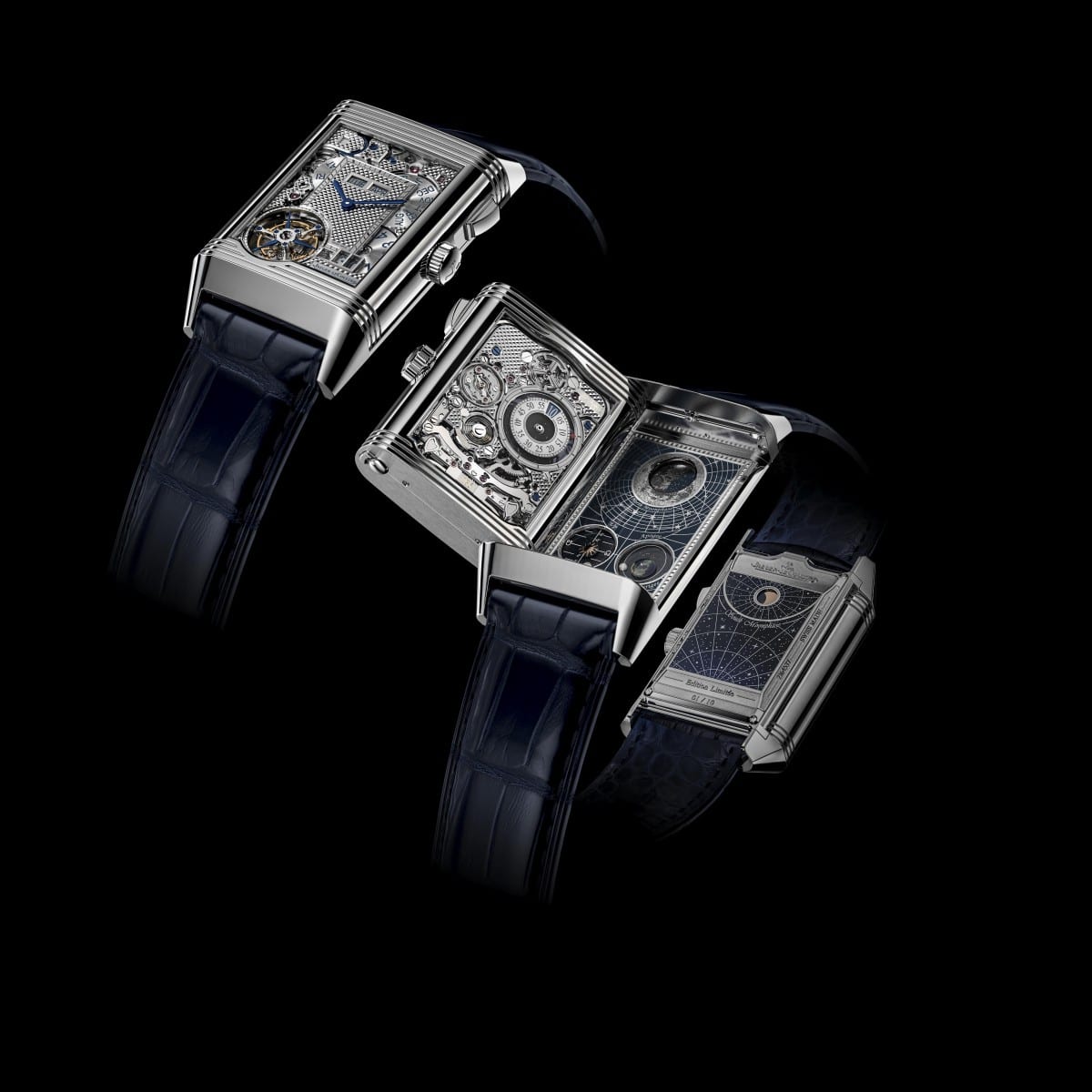Vacheron Constantin – Traditionnelle complete calendar openface: a contemporary aesthetic for a model reflecting Geneva’s grand 18th century watchmaking tradition
- A new openworked sapphire face for the Traditionnelle complete calendar watch, interpreted through two versions in 18K 5N pink gold and 18K white gold
- Calibre 2460 QCL/2 with triple calendar and precision moon phase
- A highly contemporary aesthetic for these timepieces, heirs to Geneva’s grand 18th century watchmaking tradition
Geneva,- Classically inspired with its round case featuring a fluted back, its railway minute-track and its Dauphine-type hands, the Traditionnelle complete calendar openface model adopts an avant-garde profile with these two distinctive versions. The openworked sapphire dial reveals Calibre 2460 QCL/2, whose mainplate and bridges are highlighted by anthracite NAC treatment. The triple calendar display, complemented by a precision moon phase, gains in depth through its functional and contemporary style.

Revisiting the fine historical traditions of Geneva watchmaking
Vacheron Constantin’s Traditionnelle collection, which perpetuates the spirit of Geneva’s watchmakers during the Age of Enlightenment, adopts a highly sophisticated style with two new models equipped with a complete calendar. Framed by a 41 mm case in 18K white gold or 18K 5N pink gold, they appear in an openface version with a sapphire dial. This transparency brings out the details of Calibre 2460 QCL/2, which adopts a contrasting anthracite grey colour achieved by NAC galvanic surface treatment. This new interpretation combining contemporary design and watchmaking heritage, is reminiscent of the Traditionnelle Twin Beat perpetual calendar model presented in 2019.
Airy construction
The characteristic features of the Traditionnelle collection – including the stepped round case and lugs, the fluted caseback, the slim bezel, the railway minute-track, the bi-facetted Dauphine-type hands and the gold baton-style hour-markers – embed these two models firmly in the watchmaking heritage of the Maison. The opening onto the movement structure – perfectly visible on both sides of the watch and featuring an anthracite grey colour achieved by NAC treatment – highlights its mechanical power. Surrounded by a slate grey opaline flange on which a central hand points to the date, the upper part of the sapphire crystal dial features a likewise slate grey guilloché segment as well as applied gold hour-markers. The resulting three-part dial overlooks the sapphire discs providing an aperture-type display of the days and months. The moon-phase disc, with its two realistic transferred depictions of Earth’s satellite, is also covered by a translucent sapphire mask. This airy construction provides a chance to admire the various movement components, including the bridges and mainplate featuring an original vertical upright finish on the front.
The “openface” design highlights the technical nature of the Traditionnelle complete calendar openface watch. This complication, also known as the triple calendar, indicates the date, day and month, complemented on these models by a moon phase.

Calibre 2460 QCL/2
Beating at the heart of these two new timepieces is Calibre 2460 QCL/2 with its 312 components. This calibre is an evolution of the 2450, the first self-winding movement entirely designed and developed by Vacheron Constantin. Equipped with a stop-seconds mechanism, it beats at a rate of 28,800 vibrations per hour and is endowed with a 40-hour power reserve. In addition to its triple calendar indications, it provides a precision moon phase display requiring only one correction every 122 years. The caseback reveals all the finishes one would expect from an Haute Horlogerie movement, with a circular-grained mainplate, chamfered bridges and Côtes de Genève motif. Water-resistant to 30 metres, these two Traditionnelle complete calendar openface models are fitted with a calfskin-lined grey alligator strap secured by a pink or white gold pin buckle.

———————————————————-
Sum-up
The two new Traditionnelle complete calendar openface watches in white and pink gold combine the classic attributes of the collection with an avant-garde aesthetic approach. The dial is made of sapphire crystal opening onto the movement featuring an anthracite grey colour achieved by NAC galvanic treatment. This total transparency on both sides of the watch highlights the technical nature of its horological complications. Equipped with a self-winding Calibre 2460 QCL/2, these two 41 mm models provide a complete calendar display complemented by age of the moon and precision moon phase indications. The day and month are shown through central dial apertures below the 12 o’clock hour-marker, while the date is indicated on the periphery by a central hand. Already available in rose and white gold in a more classic interpretation with a solid dial, the two new Traditionnelle complete calendar openface versions are paired with a grey alligator leather strap.

TECHNICAL DATA
Traditionnelle complete calendar openface
References
4020T/000G-B655
4020T/000R-B654
Calibre
2460 QCL/2
Developed and manufactured by Vacheron Constantin
Mechanical, self-winding
29 mm (11¼’’’) diameter, 5.45 mm thick
Approximately 40 hours of power reserve
4 Hz (28,800 vibrations/hour)
312 components
27 jewels
Hallmark of Geneva certified timepiece
Indications
Hours, minutes
Complete calendar (day of the week, date, month)
Precision moon phase
Case
18K white gold/18K 5N pink gold
41 mm diameter, 10.7 mm thick
Transparent sapphire crystal caseback
Water-resistance tested at a pressure of 3 bar (approx. 30 metres)
Dial
Assembled in three parts:
- Slate grey guilloche upper part
- Slate grey opaline flange
- Sapphire crystal with 18K gold hour-markers
18K white gold/18K 5N pink gold applied hour-markers, hour & minutes hands
18K gold blackened date hand with white crescent
Strap
Grey Mississippiensis alligator leather with calf inner shell, tone-on-tone stitching, square scales
Buckle
18K white gold/18K 5N pink gold buckle
Polished half Maltese cross-shaped
























